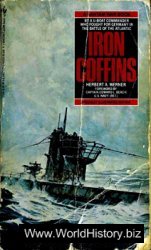The aircraft carriers came into being partly as a result of the confusions of the Battle of Jutland, in which admirals had to make instant decisions based on inadequate cruiser reconnaissance. To give the fast-moving steam fleet far-seeing eyes, the British Admiralty ordered several ships converted into carriers for land-based planes.
In the U. S. armed services, opinion after World War I regarding the future of the Navy was widely varied. Conservative naval oflBcers asserted that nothing had really been changed by the introduction of air power. Planes might sink an occasional small vessel, but the battleship remained the queen of battles, unsinkable from the air. At the opposite end of the spectrum of opinion were those who insisted that future wars would be decided by air power alone, and that armies would be useful only to occupy the space conquered by planes; surface fleets would be of no use whatever. In between were those who saw a greater role for the carrier than mere reconnaissance. Extremists in this group conceived
A Higgins boat, the ship-to-shore craft that evolved into the LCVP, most widely used landing craft of World War 11.
After sinking the Ostfriesland, General Billy Mitchell’s flyers continue their demonstration by bombing and sinking the anchored ex-German cruiser Frankfurt.
U. S.S. Langley, first U. S. aircraft carrier, was converted from a collier.
Of the carrier as a true weapon of attack, nothing less than the capital ship of the future, rendering the battleship obsolete.
The loudest, if possibly not the most astute, of the air enthusiasts was the Army Air Service’s Brigadier General William (“Billy”) Mitchell, who asserted: “If a naval war were attempted against Japan, for instance, the Japanese submarines and aircraft would sink the enemy fleet long before it came anywhere near their coast.” Mitchell’s day of triumph came in 1921 when, in a demonstration outside the Virginia capes before an international audience of dignitaries, his army planes attacked the anchored former German battleship Ost-friesland. On the second day of attack the aircraft, using specially built 2,000-pound bombs, flew at low altitudes and at last succeeded in sinking the tired old battle-wagon. With no antiaircraft fire to oppose them and no damage control parties aboard the ship, the exliibition was utterly unrealistic. Nevertheless, some befuddled Navy observers are said to have wept openly. General Gharles T. Menoher, Ghief of the Army Air Service, came closer to the point when he said, “I guess the Navy will get its airplane carriers now.” He was quite correct. The Navy promptly began to convert a collier into its first carrier, the Langley, and secured consent from the treaty powers to build the carriers Lexington and Saratoga.
Mitchell had indeed demonstrated that battleships were vulnerable to air power, but so was everything else, on both land and sea. Henceforth, fleets in wartime would have to employ antiaircraft fire and combat air patrols of fighter planes in order to protect themselves from air attack. Instead of cruising in columns or rectangles, they would have to move by day in circular formations in order to mass antiaircraft fire and keep to a minimum the area to be covered by fighters. No battleship thus protected was ever sunk or even severely damaged. What cost the battleships their traditional function was not increased vulnerability, but the fact that in the usual conditions of World War II, fleets in battle remained hundreds of miles apart, far beyond the range of guns.
One of the most important technical developments worked out in the early days of carrier experimentation was dive bombing. When planes at high altitudes dropped bombs, ships had time to maneuver out of the way; but it was another matter to elude bombs practically fired from planes that dived to within 300 feet of the vessels.
Not everyone appreciated the wisdom of U. S. Navy planners in refusing to mass-produce planes too soon. It meant that in days before World War II, flyers had to make do with a variety of obsolescent planes; but those available in quantity when war came to the United States incorporated all the latest advances in aircraft engineering and weaponry. In use in late 1941
U. S.S. Lexington, canceled as a battle cruiser by the Five-Power Treaty, reordered in 1922 as an aircraft carrier.
Were the Grumman Wildcat fighter (F4F) and the Douglas Dauntless dive bomber (SBD). The Grumman Avenger torpedo plane (TBF) reached the fleet the following summer.
The first American vessel built as an aircraft carrier from the keel up was the Ranger, commissioned in 1934. A compromise ship, she was designed in accordance with a plan to build greater numbers of ships, rather than a few of the highest quality, within the tonnage limitations specified by treaty. The Ranger was early recognized as something of a failure. Too slow and light to serve as an attack carrier, she spent her career in the Atlantic, mostly in antisubmarine work. Another carrier, the Langley, also too light for fleet combat, was converted into a tender. By the time the United States entered World War II, however, the attack carriers Yorktown, Enterprise, Wasp, and Hornet had joined the fleet, and 19 more were on order. '
Several fleet exercises had demonstrated the feasibility of the carrier as an attack vessel, particularly against land bases. In 1929 planes from the Saratoga in a simulated attack theoretically destroyed two locks of the Panama Ganal. Garrier planes later made successful mock attacks on Pearl Harbor and Mare Island. Prior to the American entry into World War II, however, the carriers were never assigned permanent cruiser-destroyer screens. Official doctrine still limited their employment to reconnaissance and shadowing, spotting of fleet gunfire, protecting the fleet from enemy submarines and aircraft, and slowing down a fleeing enemy. It was assumed, on the highest decision-making level, that naval battles would consist of Jutland-style gunnery duels between columns of heavy ships.




 World History
World History









